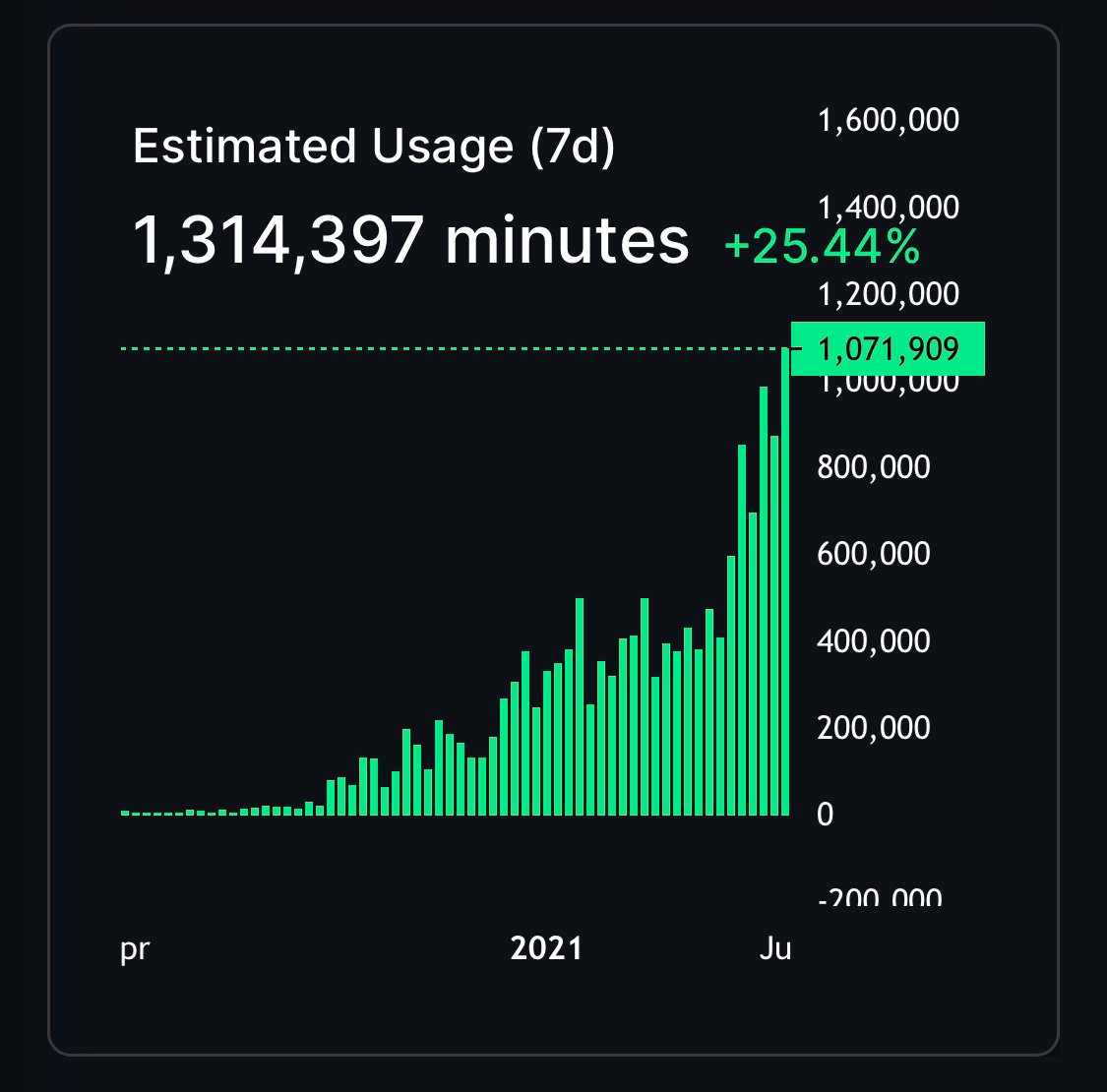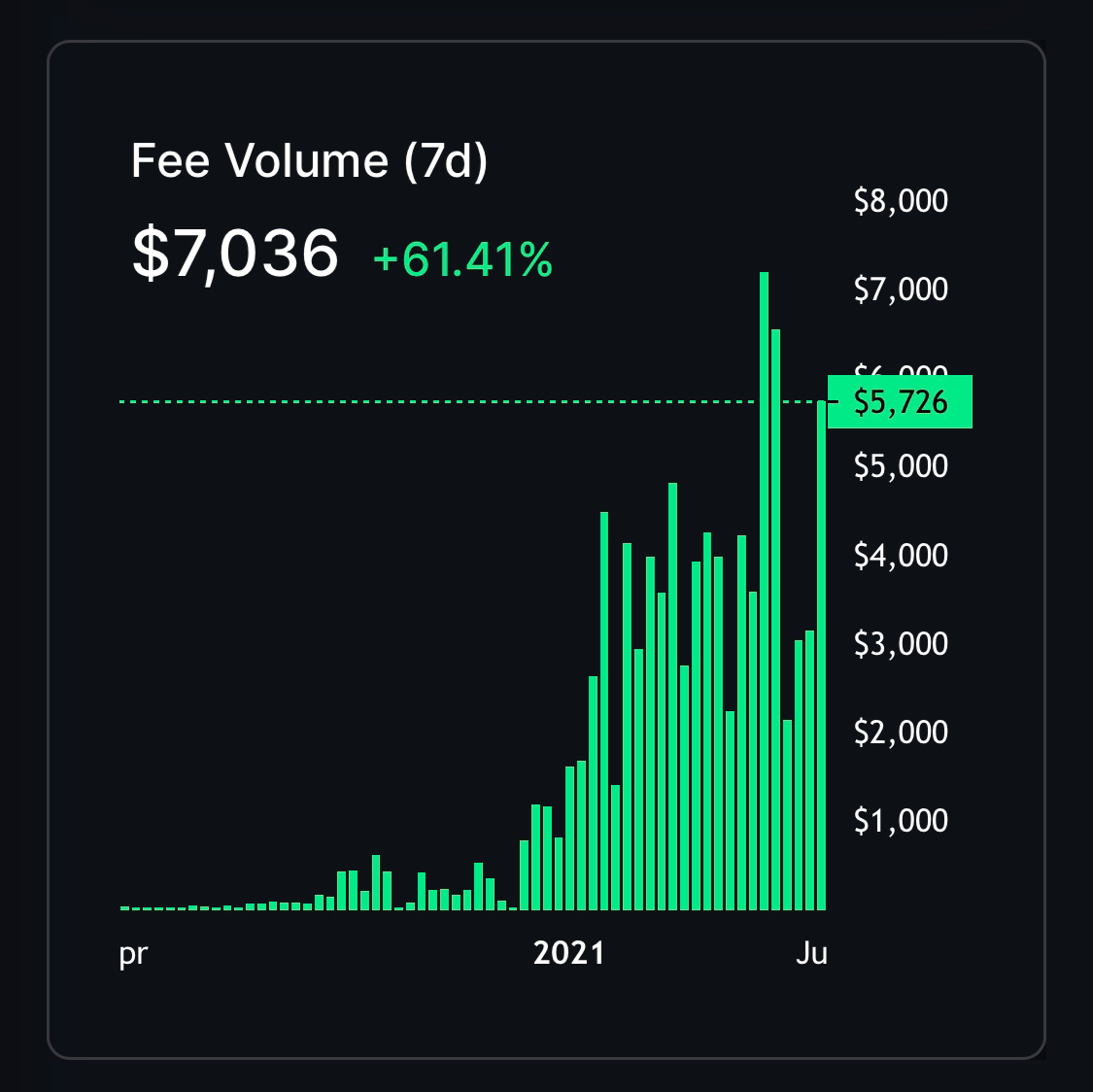Our Network: Issue #74
Coverage on Handshake, Polygon, and Livepeer.
This is issue #74 of the on-chain analytics newsletter that reaches more than 11k crypto investors every week 📈
About the editor: Spencer Noon is an investor at Variant, a first-check crypto VC fund.
This week our contributor analysts cover Web3 projects: Handshake, Polygon, and Livepeer.
① Handshake
👥 Zach Brown
📈 Handshake Crosses 1 Million Names Registered
🛒 Own your own name on the decentralized internet
Handshake is a decentralized naming protocol where names are obtained through 2nd Price Vickrey auctions. More than 1.28M names have been registered to date, growing 25% month over month for the last six months. Daily bid volume is at all time highs with ~10k bids a day. Winning bid amounts are burned from supply, a deflationary pressure on the $HNS currency. Total HNS Burned to date is 21.7M HNS, equal to more than 1% of total supply burned in just sixteen months since network launch.
On the Namebase Marketplace, secondary sales of Handshake names have grown from 60,000 HNS a year ago to five straight months of over 1 Million HNS in volume. Resale value will continue to grow with the emergence of exchange protocol ShakeDex and use cases like registrars, email, usernames, and more
Our mining ecosystem maintains a healthy growth trajectory. With the combined network hashrate reaching 11 petahashes, we’ve seen roughly 50% growth since our last update. HNS is now producing around $100k+ daily in block rewards, surpassing the daily security of chains almost 5-10x its market cap.
② Polygon
👥 Joel John
📈 Daily transaction count reached an ATH of ~7.4M
🏗️ Start building on Polygon today!
Polygon's meteoric rise over the past few quarters has not come out of the blue. The macro-economic stage was set with Ethereum being flat in terms of transaction count. This was partly because the network was at capacity and rising gas costs meant individuals engaged with DeFi applications in fewer frequency. This was Binance Smart Chain's opportunity to shine as the network scaled from under a million transactions a day to over 11 million at its peak. Polygon's growth in comparison has been slow, steady, and relatively organic. The largest names building on Polygon are not strangers to Ethereum. In comparison to the numerous forks and rug-pull attacks on Binance Smart Chain, Polygon has had a smaller ecosystem of DeFi applications that have been already battle tested on Ethereum.
QuickSwap is a variation of Uniswap on Polygon's network. Sushiswap, Zapper, Curve, and 1inch are known names on Ethereum. Users transitioning towards Polygon's network are trying to escape the cost of transactions on Ethereum's network while seeking similar user experiences. The cost of every transaction combined on Polygon on a given day can come to a few thousand dollars in gas compared to the millions spent on Ethereum's network. There are security trade-offs at play here but, for the moment, it seems users are comfortable with taking that risk. To me, this data shows the role that DeFi can play in a low-cost transaction environment. While applications like NFTs are novel and can find large-scale business-to-consumer use-cases, DeFi dominates transactions given the higher transactional velocity.
The chart below looks at the source of transactions on Polygon. I have excluded transactions from "unknown entities" to understand how users have been using Polygon. Aavegotchi had a substantial rise right around the time of all-time high for crypto assets. This is likely an extension of risk-on behaviour due to profits emerging from existing digital asset holdings. However, if we exclude it - the dominance of AMMs become quite evident judging by the rise of Sushiswap and Quickswap within this distribution. Aave's integration has also been contributing to the share of transactions more recently.
Aave has been on Polygon for less than a quarter but its rapid growth is quite evident. As of writing this, the average user on Polygon's implementation of Aave does ~5 transactions on any given day. The combined gas cost for supporting over 4,000 users as of early June was under $15. Layer two implementations of lending platforms could unravel entirely new behavior in markets as the costs incurred for borrowing and swapping is reduced. One reason I believe this could be the case is Quickswap's numbers as shown below.
Quickswap's rapid growth can be linked to the rise of other DeFi projects building on DeFi but two things stand out for me: (1) it enables over 10,000 swaps consistently as of writing this - indicating that users likely make great use of the lower transaction fees, and more importantly the average value of a swap has risen from $186 to north of $30,0000 at its peak over the time. The recent pullback in markets may have affected user behavior but it is safe to say that Polygon is enabling whale-scale infrastructure within DeFi.
③ Livepeer
👥 Doug Petkanics
📈 Livepeer passes 1M minutes of unique video streamed per week
👉 Join the Livepeer community Discord
The number of minutes of input video streamed through the Livepeer network has grown to over 1,000,000 minutes/week, up from about 400,000 in March. As the most critical metric of the Livepeer network’s health, an accelerating [minutes of input video streamed] indicates a growing adoption amongst the video apps building on Livepeer, such as Korkuma.com and Playdj.tv.
Global access to LPT has increased recently through several high profile exchange listings, resulting in 100 active worldwide orchestrators running GPUs to transcode video on the network. This is currently the max capacity of the network, but with a low threshold to enter the top 100, currently just over 2 LPT, node operation is still highly accessible to those looking to become a transcoder. In fact, these operators are competing for ETH fees flowing through the network which recently peaked at over $7000/week (in addition to inflationary LPT rewards at about 7% APY).













